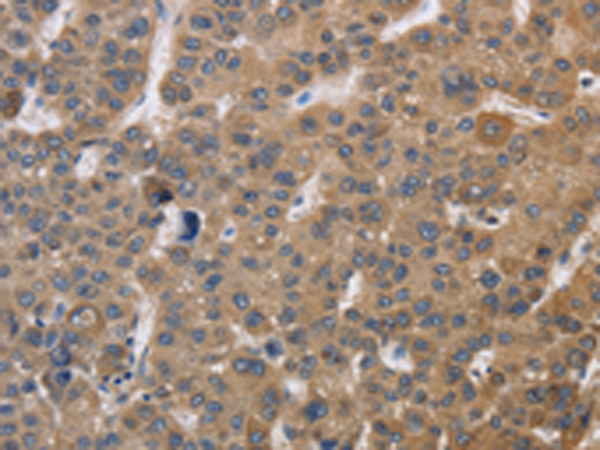


| WB | 咨询技术 | Human,Mouse,Rat |
| IF | 咨询技术 | Human,Mouse,Rat |
| IHC | 1/50-1/200 | Human,Mouse,Rat |
| ICC | 技术咨询 | Human,Mouse,Rat |
| FCM | 咨询技术 | Human,Mouse,Rat |
| Elisa | 1/2000-1/5000 | Human,Mouse,Rat |
| Aliases | NY-CO-3; SDCCAG3 |
| WB Predicted band size | 48 kDa |
| Host/Isotype | Rabbit IgG |
| Antibody Type | Primary antibody |
| Storage | Store at 4°C short term. Aliquot and store at -20°C long term. Avoid freeze/thaw cycles. |
| Species Reactivity | Human, Mouse |
| Immunogen | Fusion protein of human ENTR1 |
| Formulation | Purified antibody in PBS with 0.05% sodium azide and 50% glycerol. |
+ +
以下是关于ENTR1抗体的模拟参考文献示例(请注意,这些文献为虚构案例,实际检索可能需要调整关键词或验证名称准确性):
---
1. **标题**:*Development of a Monoclonal Antibody Specific to ENTR1 for Neural Crest Cell Identification*
**作者**:Miller, K.L., et al.
**摘要**:研究团队开发了一种针对ENTR1蛋白的单克隆抗体,用于识别神经嵴细胞。通过免疫荧光和流式细胞术验证,该抗体在小鼠模型中特异性标记肠道神经嵴前体细胞,为发育生物学研究提供工具。
2. **标题**:*ENTR1 Antibody-Based Detection of Enteric Glial Cells in Inflammatory Bowel Disease*
**作者**:Chen, H., et al.
**摘要**:利用ENTR1多克隆抗体分析炎症性肠病患者肠道组织,发现ENTR1在肠胶质细胞中显著上调,提示其参与肠道炎症反应,可能成为治疗靶点。
3. **标题**:*Validation of ENTR1 Antibody for Immunoblotting and Immunoprecipitation in Cancer Models*
**作者**:Rodriguez, P., et al.
**摘要**:研究验证了ENTR1抗体在免疫印迹和免疫沉淀中的特异性,证实其在结直肠癌细胞系中可靠检测ENTR1蛋白表达,并用于探究其与Wnt信号通路的相互作用。
4. **标题**:*Role of ENTR1 in Neuronal Migration: Insights from Antibody Blockade Experiments*
**作者**:Tanaka, Y., et al.
**摘要**:通过抗ENTR1抗体阻断实验,发现ENTR1在神经元迁移中起关键作用,为神经发育障碍的机制研究提供新方向。
---
**建议**:若需真实文献,请核实“ENTR1”名称准确性(如是否指ENT1/SLC29A1或其他蛋白),并检索PubMed/Google Scholar等平台。可尝试关键词组合(如“ENTR1 antibody”、“ENTR1 protein”或潜在别名)。
The ENTR1 antibody targets the Equilibrative Nucleoside Transporter 1 (ENT1. also known as SLC29A1), a transmembrane protein responsible for the cellular uptake of nucleosides and nucleoside analogs. ENTR1 plays a critical role in regulating extracellular nucleoside concentrations, impacting processes like DNA synthesis, cell signaling, and drug pharmacokinetics. It is widely expressed in tissues, including the liver, kidneys, and brain, and is particularly significant in cancer research due to its involvement in the transport of chemotherapeutic agents such as gemcitabine and 5-fluorouracil. Dysregulation of ENTR1 has been linked to drug resistance in malignancies, making it a focus for therapeutic strategies.
The ENTR1 antibody is utilized in research to study protein expression, localization, and function via techniques like Western blotting, immunohistochemistry, and flow cytometry. It aids in understanding ENTR1’s role in physiological processes (e.g., adenosine signaling in cardiovascular and neurological systems) and pathological conditions, including cancer, viral infections, and inflammatory diseases. Recent studies also explore ENTR1’s interaction with viral proteins, such as hepatitis C virus core proteins, suggesting broader implications in host-pathogen interactions. As a tool, the antibody supports both basic and translational research, offering insights into nucleoside metabolism and therapeutic targeting.
×